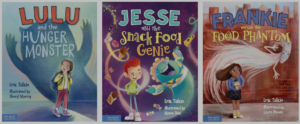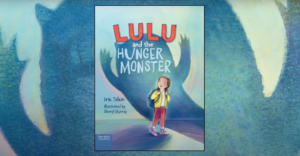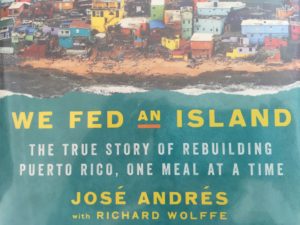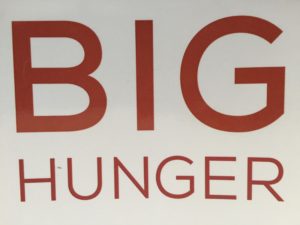When Dave Krepcho was the CEO of Second Harvest Food Bank of Central Florida, he and his friends in food banking across the country would often reflect on the massive impact of the food banking movement over the years and the need to document it. “Somebody should write a book!” they said.
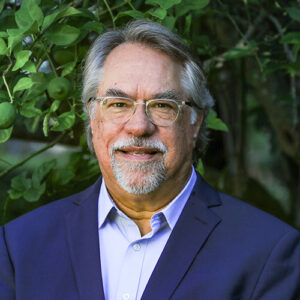
That somebody turned out to be Krepcho, who turned to the project once he retired at the end of 2021, after 34 years in food banking. His book, Empty Plates: The Evolution of Hunger Relief, Until All Are Fed, chronicles the history of domestic hunger relief, including the formation of food banking, the early days of Feeding America, and the many forces that needed to come together to spark this enormous effort. A fascinating introductory section examines hunger relief globally over the centuries, and a closing section offers sage advice on leadership, culture and vision.
This Q&A (edited and condensed for clarity), touches on a portion of the wide range of topics covered in Krepcho’s book. For many more insights, compelling stories and a load of inspiration, check out Krepcho’s website here, where his book is available for purchase.
Who do you see as the audience for this book?
First and foremost, I thought food bankers are going to appreciate this. I thought about the turnover of leadership at food banks. I believe in the last five to seven years, at least 60% of the leadership of the 200 food banks in the Feeding America network has changed. That’s a lot of new folks coming in, and they don’t know the history. I thought, we’ve got to hold on to some of these things and remember them. Not to get stuck in the past, but you’ve got to learn from the past.
You talk about how your life trajectory changed when you started volunteering at a food bank in Miami. What trajectory were you on before that?
I was in the ad agency business. So I went from the dark to the light. But boy, did I ever appreciate my background in advertising and marketing
How did your advertising background help you in food banking?
It’s all about communication and awareness. First, you have to create an awareness to get people interested, then they’re going to have a desire, and hopefully take some action. So that’s the formula. I found out that most nonprofits, the vast majority, had no idea on how to promote themselves or spread awareness. They were good-natured people with the biggest hearts and abilities, but not a lot of business experience. They didn’t understand marketing. And when I started talking about it, some of them took offense that I could be so crass and commercial. I said, we need to do it twice as much as the for-profit companies.
In your book, you talk about the importance of food banks deciding whether they’re going to fight hunger or end hunger. Can you expand on that?
A few years ago, a group of us realized that we weren’t going to ‘food bank’ our way out of the problem. Feeding America had come out with this great research measurement tool of Map the Meal Gap, and I thought, for the first time ever, there was a finish line. A lot of us applied that to the local markets that we served, and about five or six years later, we had met that goal, but the problem was not going away. So we started looking further upstream and realized that someone who’s hungry is just not hungry. There are multiple issues. So we thought, okay, we can’t work any harder. We need to work smarter. And what does that look like?
What does that look like?
There’s not a one-size-fits-all solution for food banks across the country, but more and more food banks realize and understand about these root causes. Each market is going to be different, and there’s going to be ways within that community where you can do that in a small way or a big way,
Is it realistic to think that food banks can get involved in issues like affordable housing? How far upstream can they really go?
Yes, I think so. There are ways to partner and make this a more systematic approach, because we’re dealing with the same population. I’ll give you one example. We identified housing, education, health care, and income as root causes of hunger. And we said, ‘What are we doing in these areas? And can we do more?’ A tough one was affordable housing. But we said, ‘Okay, who’s doing affordable housing?’ One of the obvious partners that we sat down to talk with that we never did in the decades of the food bank was Habitat for Humanity, right in our backyard. So we chatted and they were able to bring us into their community organizing and that led to deeper conversation and involvement. The other thing we realized – and this is just like a no-brainer – every time a Habitat home opened up, we would stock the kitchen with food. Another synergy was when a couple of graduates from our culinary program got jobs and then got Habitat homes. So there are ways, if you spend some time exploring.
What would ending hunger actually look like? What would food banks do?
Food banks would be able to focus their efforts more on natural disasters or economic disasters because those hit just about everybody. The other thing is having a multi-service center. A few years before I left, I brought in a futurist – this guy is a retired Disney Imagineer, a really cool guy – and I said, what if we could wipe the slate totally clean? If we were creating a solution today, what would it look like? So he designed a retreat for us that generated a bunch of interesting ideas. The one that came across clearly was having this multi-service center where people would be welcomed in, could have a cup of coffee with a counselor, and get help with their situation. It’s working with people and it’s creating a relationship with those people. I’m retired and I’m not going to work again, but if I ever did, I would really focus my efforts on that.
What advice do you have for food bank leaders?
Read the epilogue and lighten up! Really, I think it comes down to pushing the envelope in how you do your work, continue to innovate, and don’t accept the status quo. There’s incredible power in the status quo, and it takes a lot of effort to challenge it and to move beyond it. The other piece of advice is my chapter on advocacy and public policy. We have to bring the population we serve to the table whenever possible and have them tell their stories. Those conversations with legislators or legislative aides mean so much. If you could pull the biggest lever possible to create a hunger-free America, it would be public policy.
Like what you’re reading?
Support Food Bank News

